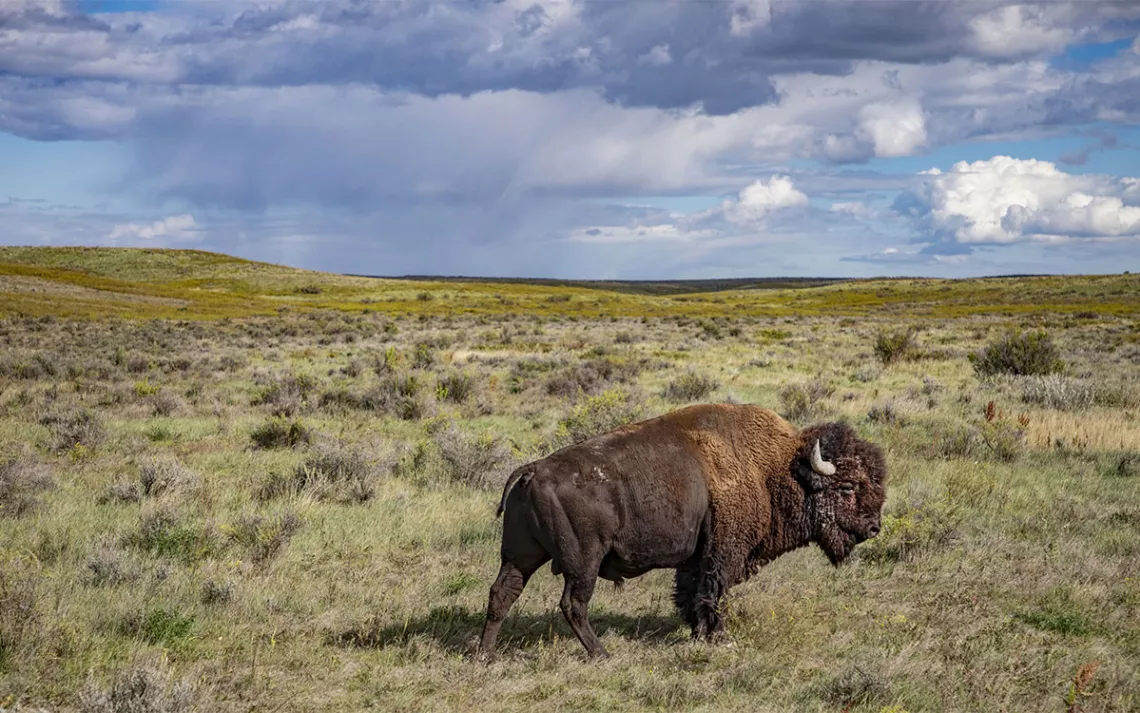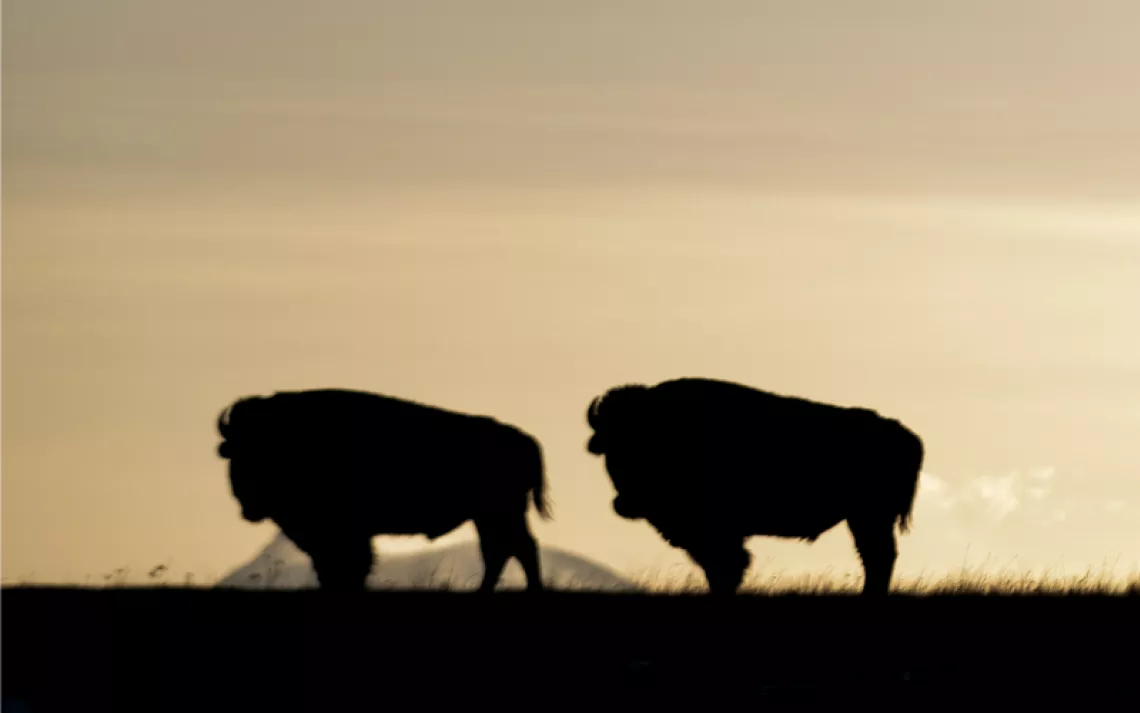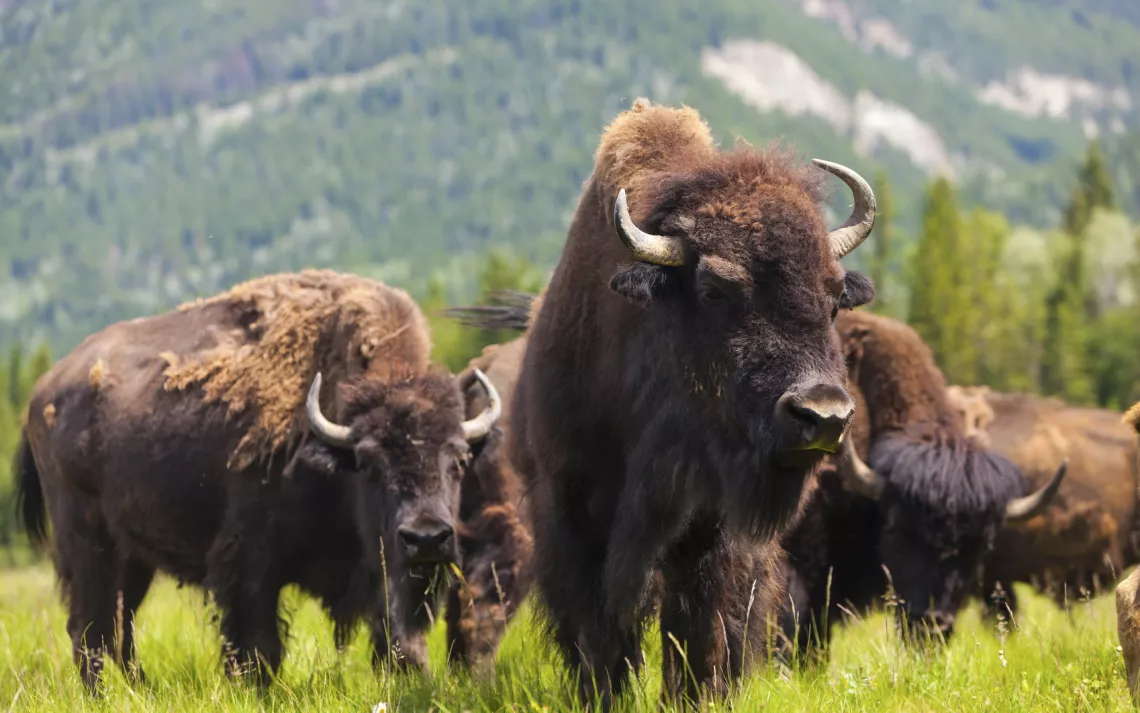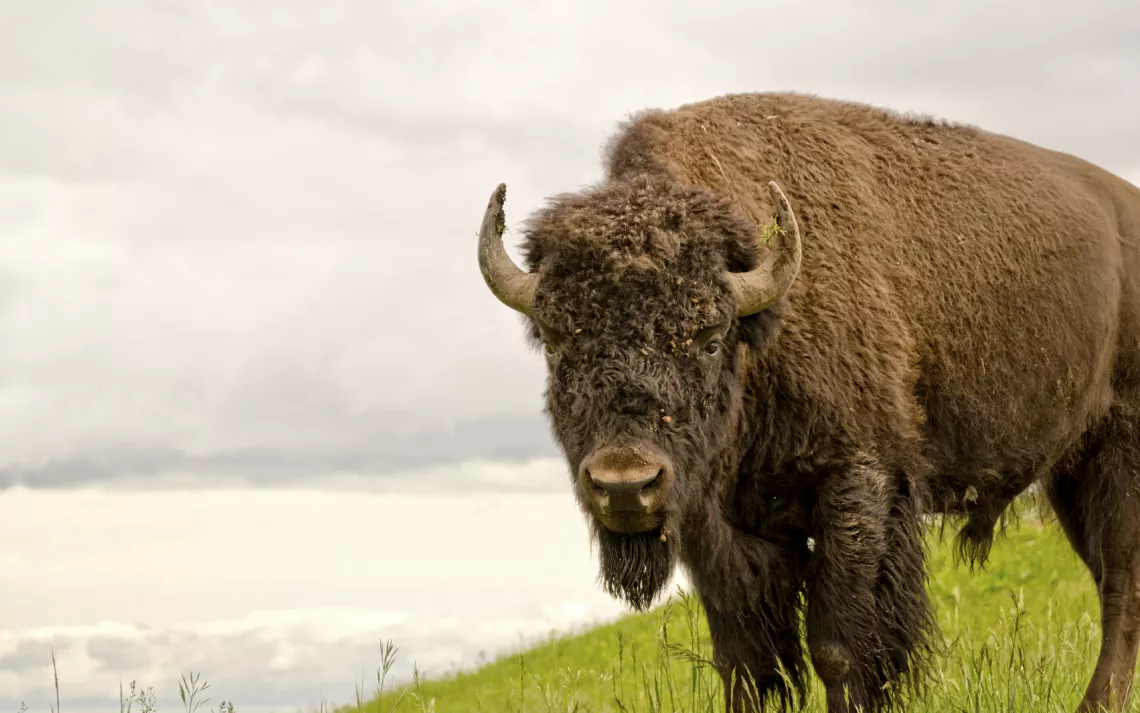Bison Get the Ken Burns Treatment in "The American Buffalo"
New PBS documentary shows how bison helped shape a continent

Bison in Montana. | Photo by Craig Mellish
Early zoogoers flocked in the thousands to see a small captive herd of American Bison at the Bronx Zoo in 1905, a time when the animals were so rare that those seeking to restore their populations couldn’t find wild individuals to establish new herds. To this day, bison numbers have never fully recovered from the slaughter of the 19th century. Instead, small populations of the country’s national mammal are confined to public land, Native American reservations, and private herds.
These contradictions lie at the heart of Ken Burns's new four-hour, two-part series The American Buffalo, which aired on PBS last month. In classic Burns style, he turns the story of bison into the history of the continent. For example, he shows how bison helped shape the nation in ways that led to their destruction: Their meat enticed early settlers, their hides powered factories, and their bone served as fertilizer.
Weaving together the vast tapestry of bison history are over a dozen interviews, including Native voices such as George Horse Capture, Jr. from Oklahoma's Aaniiih Tribe and Rosalyn LaPier from Montana's Blackfeet Nation and award-winning environmental writers Michelle Nijhuis and Steven Rinella. Their voices are frequently coupled with the sound of running hooves or the drumbeat of tribal buffalo ceremonies, a technique so associated with the film’s executive producer that it has been dubbed the "Ken Burns Effect."
In the first half of the series, titled Bloody Memory, viewers quickly learn that to understand the trajectory of bison is to know the history of the people who relied on them. For Native Americans, bison were sacred beings that provided for entire communities from cradle to grave. Babies were born and then wrapped in bison fur, bison hides were used for teepees and their horns for weapons and cutlery. And in death, some tribes buried loved ones in bison robes.
While the extent of tribes' reliance on bison is told with great care and tact (something Burns is known for), this first half is lathered in despair as a century of genocide of Native Americans and commodification of bison unfolds in less than two hours. By the end of the 19th century, colonists, emboldened by the myth of Manifest Destiny, decimated the herds that had once captured their imagination. The purpose of this erasure is impossible to mistake: The film traces the direct link between the US government killing bison, stealing tribal land, and imprisoning Native people.
"When there was a desire to connect the East Coast and the West Coast, there were two great impediments," Germaine White, an education specialist for the Confederated Salish and Kootenai Tribes, notes. "One was bison. The other was Indigenous people. And [the US government] thought they could solve the second by eliminating the first."
What part one lacks is offered in multitudes in the second half of the series, Into the Storm. Resilience is the through line here as an improbable group of wealthy citizens—former trophy hunters, a taxidermist, ranchers, and Gilded Age socialites—sets out to save a species from extinction. One odd juxtaposition is the relationship between Quanah Parker, a Comanche leader who had once fought the US government, and Teddy Roosevelt, former president and notable conservationist. Lesser-known figures feature prominently too. In the 1890s, Fredrick Dupree and his wife, Good Elk Woman, a Miniconjou Lakota, owned one of the largest private bison herds in the country on the Cheyenne Reservation and helped stock herds in South Dakota’s Custer State Park, now home to one of the largest herds outside Yellowstone. Charles Jesse Buffalo Jones, nature writer Ernest Harold Baynes, and James “Scotty” Philip, a rancher encouraged by his Native American wife, Sarah Larribee, are also among the people who played instrumental roles in halting the decline of bison. Linking this cast of characters is where The American Buffalo really shines.
While many viewers will know that bison were driven to near extinction, the precise reasons are seldom given due credit. Exploitation, power, the pursuit of wealth, and industrialization are brought to light using cohesive, narrative storytelling that is both astute and a joy to watch, even in its darkest moments.
More than anything, the film is a testament to human ingenuity to right wrongs, even in the last hour. For a small group of people, extinction was intolerable. Long before Western science revealed the importance of keystone species and their ecological benefits, these individuals stood up to the status quo and rebuked the prevailing convention of their time. The American Buffalo brings into sharp relief the capacity of human determination and emotion to spur action and left this viewer with hope for a future in which bison, currently quarantined and penned unlike any other native mammal, can once again roam free.
 The Magazine of The Sierra Club
The Magazine of The Sierra Club



